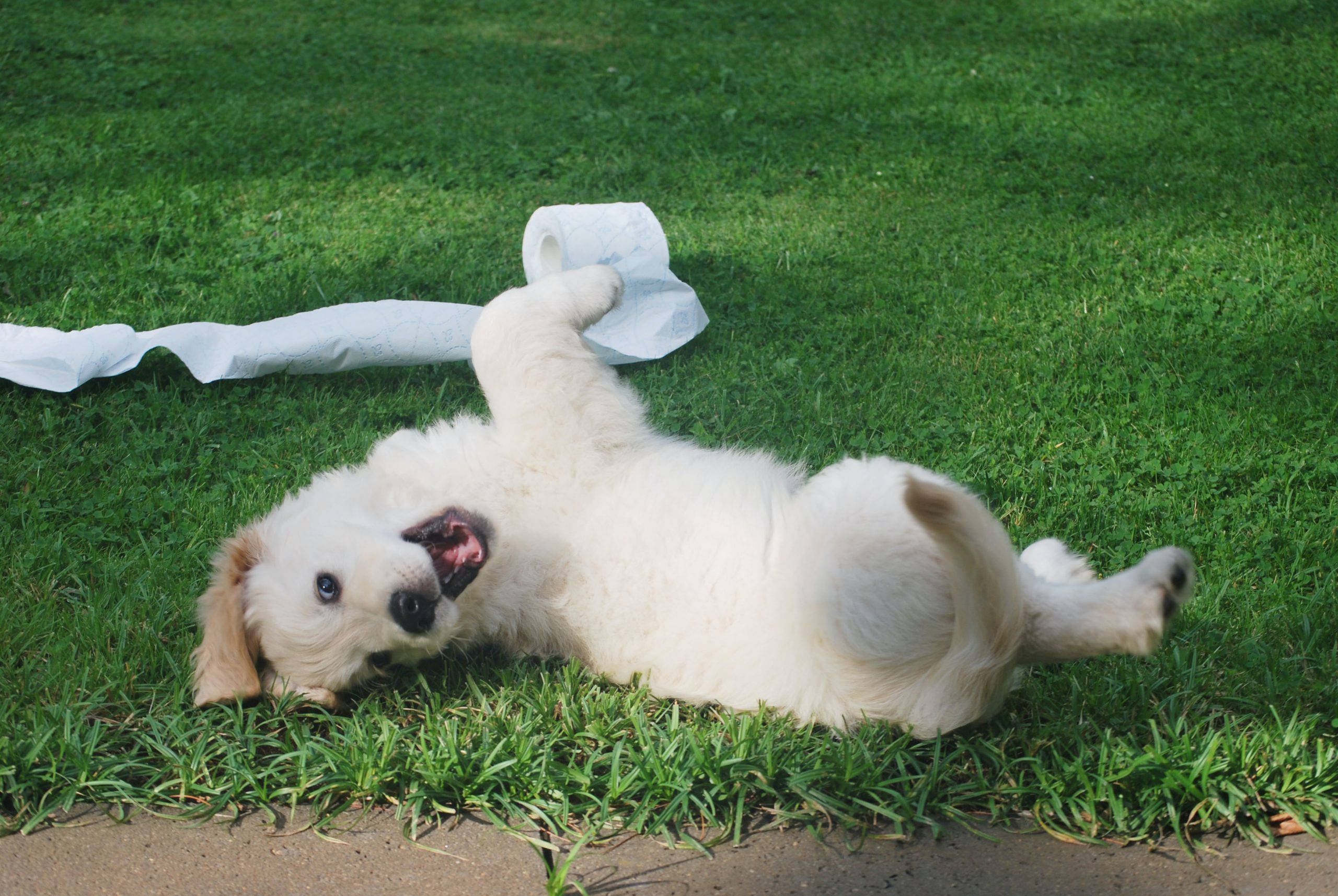Bringing home a new puppy can be exciting but also overwhelming for you both! Luckily, a little preparation and establishing routines right away will help smooth out the transition and give you both a boost of confidence. Remember, everything is brand new to your puppy, so it’s up to you as pack leader to teach them about good and bad behavior and introduce them to the rules of their new home.
Caring for a new puppy
Potty train right.
- Buy an expandable crate. This piece of equipment will help to potty train your new puppy while also ensuring they feel secure and comfortable at night. Set the size of the crate so that your dog can stand up and comfortably turn around. You can find some crates online here.
- Puppies have small bladders. This mean that you will likely be spending a lot of time running your new friend outside and sometimes very early in the morning. But, we promise, it goes by fast!
- The age of your puppy gives you an idea of how long they can go without peeing. For example, a 3-month-old puppy can wait about three hours before needing to pee and a 5-month-old about five hours. It will vary by individual dog, but this general rule works until about six months of age. (Adult dogs should never be made to wait more than six hours to relieve themselves. It’s bad for their kidneys and can cause permanent damage.)
- What goes in, must go out. If your puppy eats and/or drinks, she will need to pee and possibly poop immediately after (about 15-20 minutes). While potty training, feed your puppy in the crate and then take them outside 15 minutes later to minimize accidents. For puppies, it’s best to remove the water bowl overnight (otherwise, you’ll be spending your night taking your pup out every 2-3 hours).
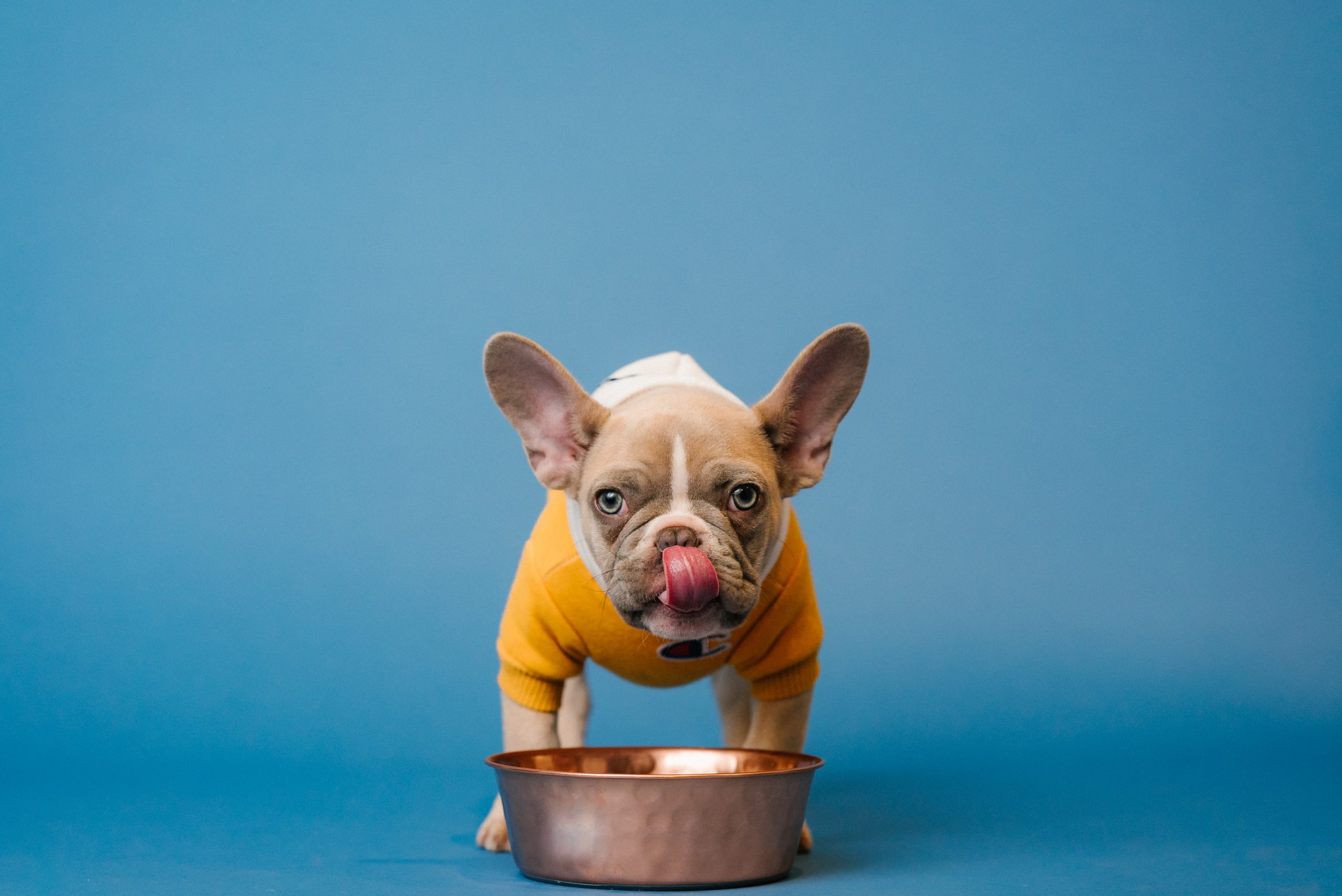
Purchase quality, nutrient-dense food.
- There are so many great brands available. Visit any specialty pet store, and you’ll be overwhelmed with terrific choices. We sell Acana and Orijen at Fitdog, but your local Petco or Petsmart offer other quality brands like, Blue Buffalo or Wellness, that are way better than the stuff you’ll find in your grocery store. Check out the best dog food brands here.
- Puppies need to eat three times a day until they are about six to nine months old. Because of their rapid growth and high energy, they need to consume more calories than an adult dog.
- At around 1 year old, you’ll need to reduce their food intake to prevent them from gaining weight. Your veterinarian can help you determine the right amount for your individual dog’s needs.
- Also, pay attention to the guidelines on the dog food label because each brand offers a different level of protein, calories, and other nutrients. In general, the more nutrient dense, the less food you need to feed them (which is why seemingly expensive dog foods can actually be cheaper because your dog eats less per meal).
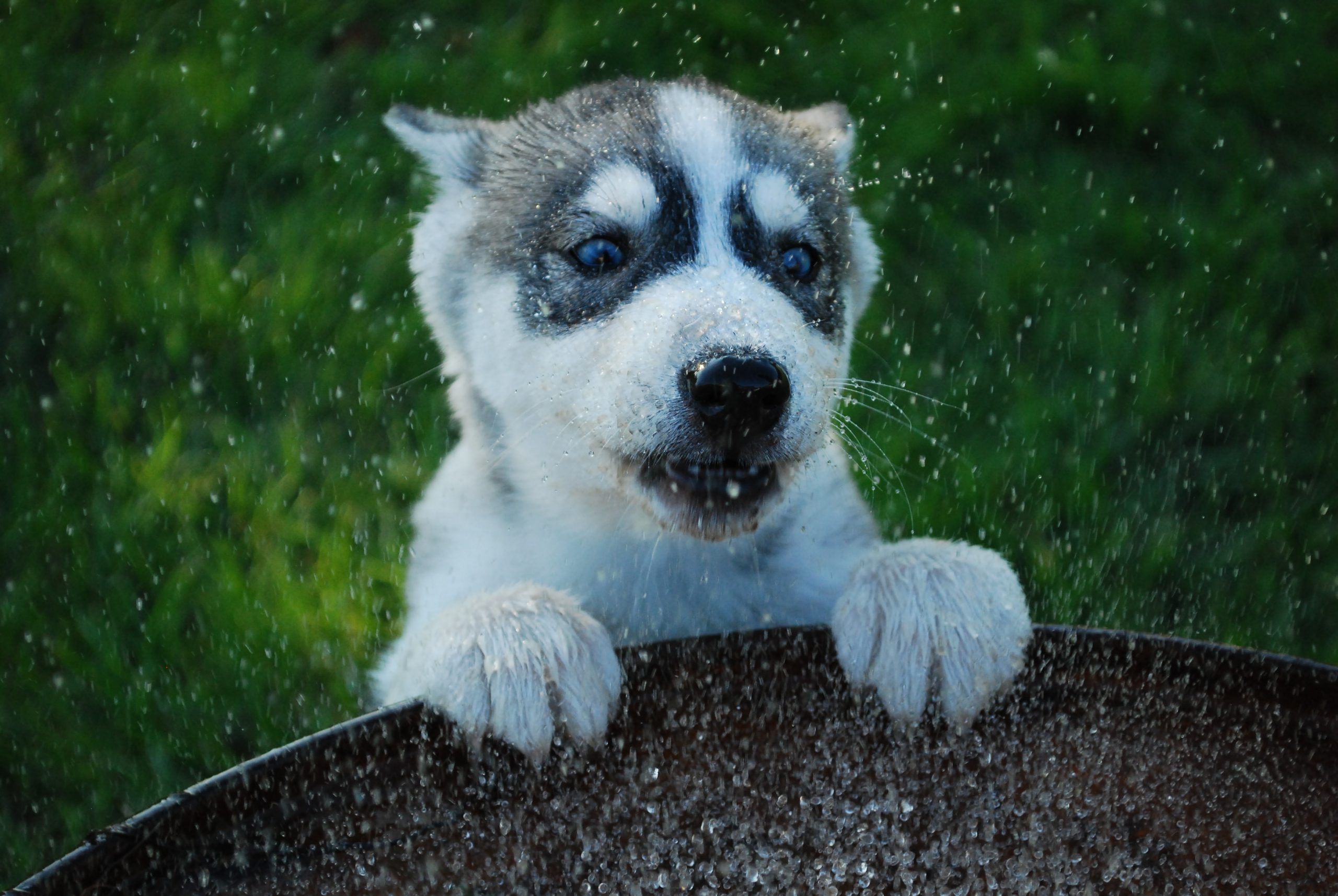
Cleaning.
It’s no surprise that puppies are messy beasts – and prone to accidents. We recommend buying Nature’s Miracle, an enzyme-based stain and odor remover that works on carpets, floors, crates, and pretty much everywhere else.

Invest in a collar and tags.
An ID tag is critical to have on day one with your new puppy. You want people to be able to ID your dog if she were to accidentally get loose as well as catch hold of him by the collar. Depending on the breed, a harness might work best for walking. We also recommend microchipping and licensing your dog.
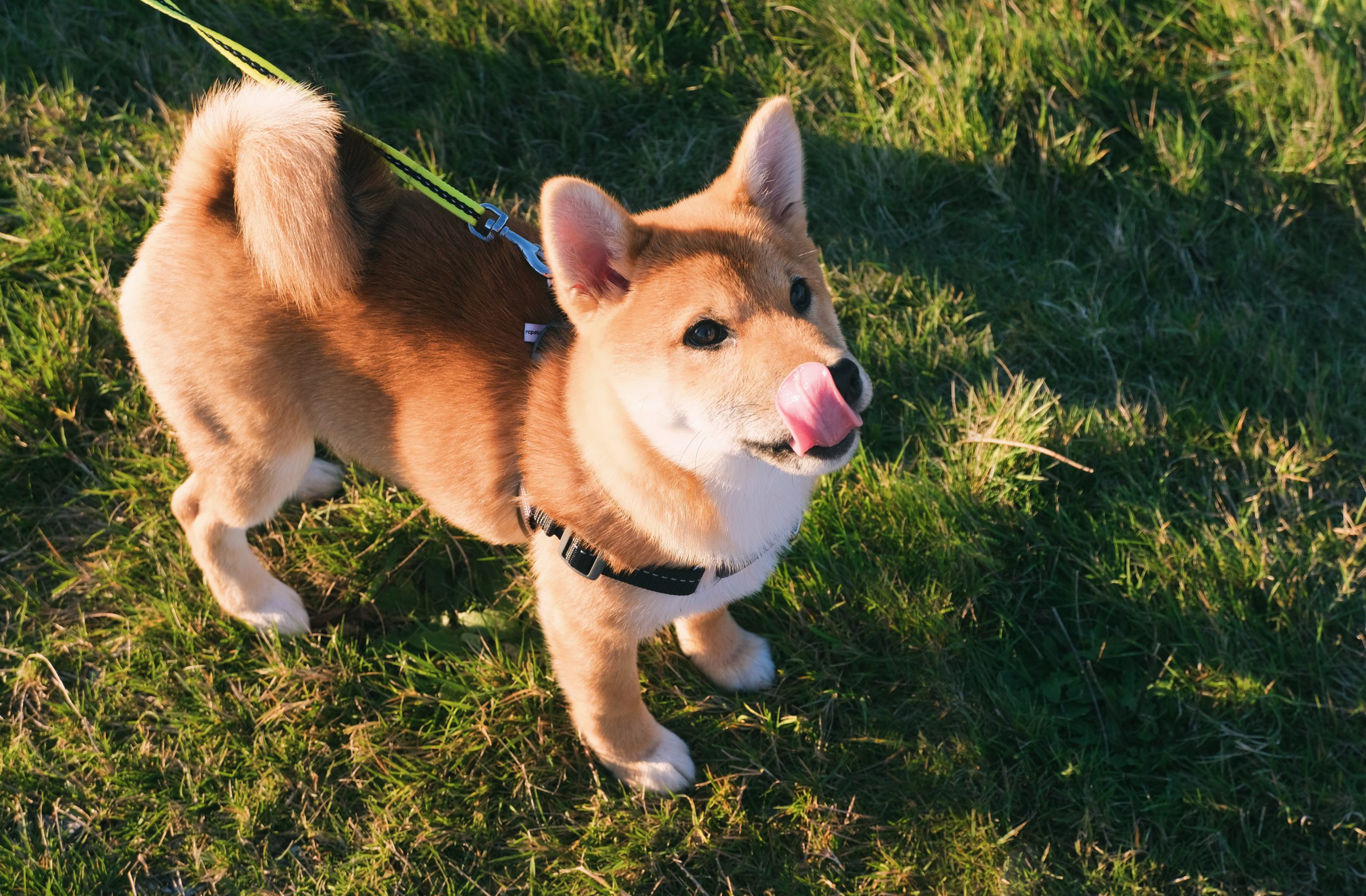
Go for a walk.
Outside of potty breaks, all dogs need at least one (or two!) long walks per day for a minimum of 30 minutes to 1 hour of exercise per day. Try a 30-minute morning walk combined with another 30-minute midday or evening walk. Walking to new areas stimulates a dog both mentally and physically. NOTE: Hanging out in the yard is not a substitution for walks! Dogs at this age might not like being leashed or harnessed, but the more you walk them, the better they’ll become at it.
Running is usually not recommended until dogs hit 1 year old because the joints and bones aren’t fully developed until then. However, it can depend on the individual dog. Fitdog’s very own Jack Russell, Brecken, began running short distances at 6 months of age because of his high-energy level, and he’s still kicking it at age 11. Read 5 tips for running with your dog
If you do want to run with your puppy, consult your veterinarian. In general, stop whenever they want to stop. They’ll let you know. Be sure to bring lots of water and choose a path that is soft on their paws.
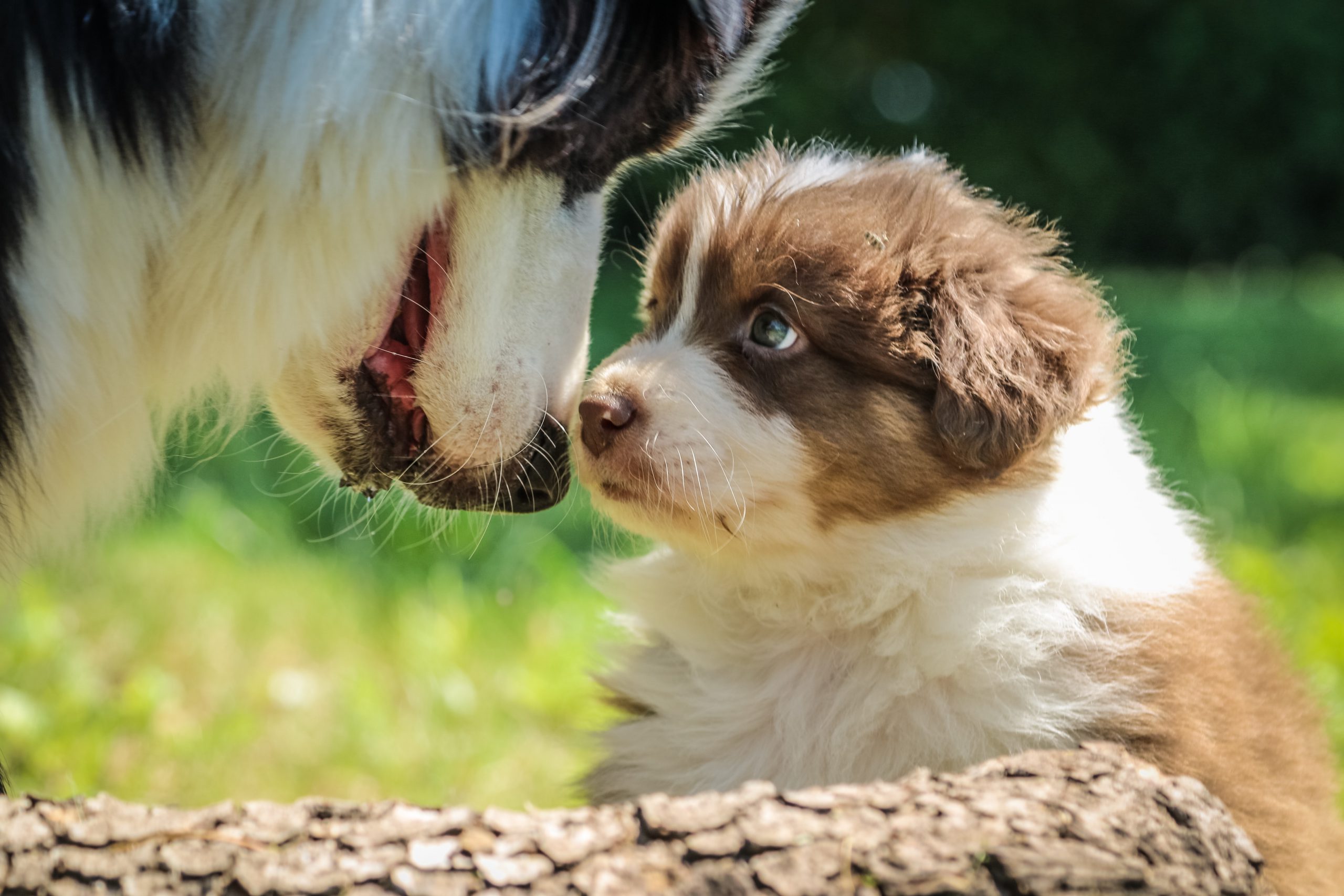
Socialization.
It’s important for your dog to interact with all types of people and dogs as early as possible. Creating positive social interactions helps a dog to become well-adjusted and learn good behavior. We recommend creating a socialization checklist with a list of different exposure points for your puppy. Check out the one we created below:
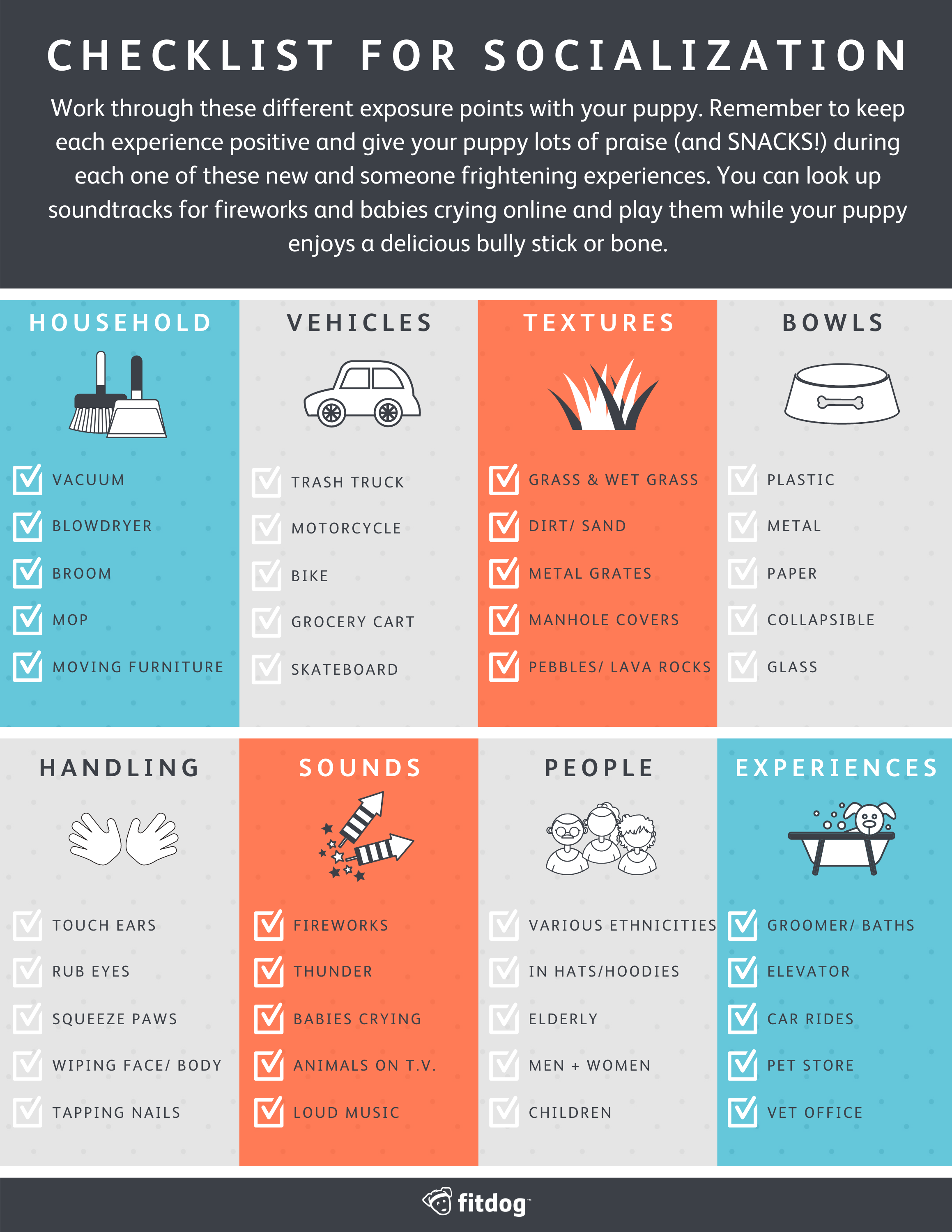
Walks are one great place for socializing your puppy early on (pre-vaccination). A dog daycare or a puppy socialization class are great ways for your dog to gain socializing skills, burn off energy, and just be a dog. But before your puppy mingles in large groups, he needs to finish his vaccination schedule (usually between 4 – 5 months) in order to keep him safe from developing a potentially serious disease. Read: Why daycare can wait
At Fitdog, we believe in the power of early socialization and positive reinforcement training. Above all, we want to help you build the foundations for a healthy life for your puppy and prepare them for life in our human world. From musculoskeletal development, training foundations, healthy play behavior, and potty training, we feel our puppy essentials program will help your puppy play, learn, and discover.
This article was updated on December 21, 2023.
This article was originally published on August 24, 2014.
